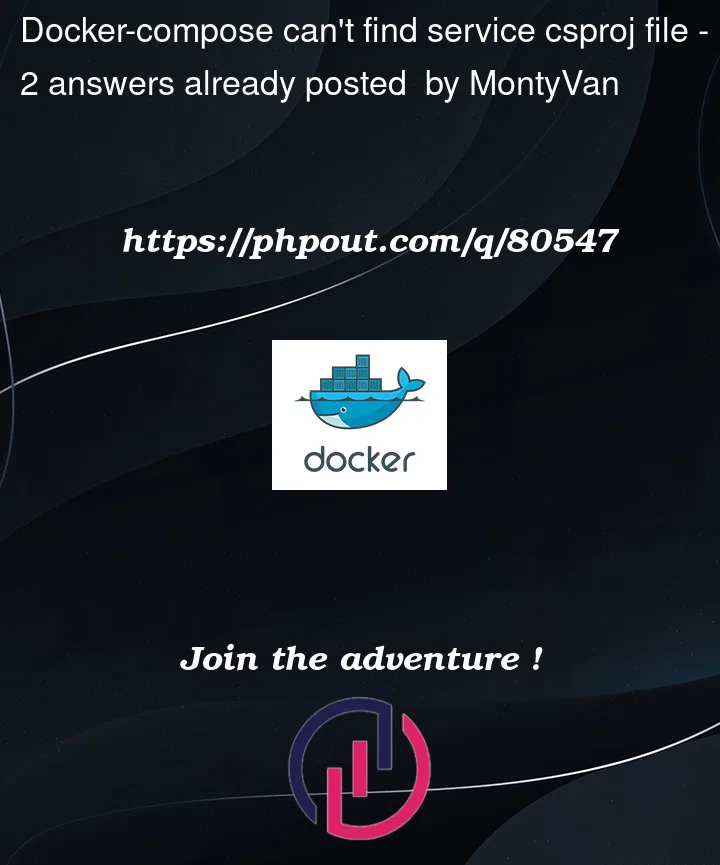I am very new to docker and did a good bit of searching through other questions asked here as well as reddit. The issue I am having is that docker can’t find my .csproj files of the services I am trying to containerize. When I am inside the solution of a given service, running docker build in the terminal creates an image successfully. However, when I try to do "docker-compose -f docker-compose.yml up –build" it gives me the following error:
"RUN dotnet restore "contentservice.csproj, error MSb1009: project file does not exist"
For reference, here’s my project structure
- solution
- contentserviceprj
- Dockerfile
- userserviceprj
- Dockerfile
- docker-compose
- docker-compose.yml
And here’s one of the Dockerfiles (they are basically the same apart from names) and my docker-compose.yml file:
Dockerfile:
FROM mcr.microsoft.com/dotnet/aspnet:6.0 AS base
WORKDIR /app
EXPOSE 80
EXPOSE 443
FROM mcr.microsoft.com/dotnet/sdk:6.0 AS build
WORKDIR /src
COPY *.csproj .
RUN dotnet restore "contentservice.csproj"
COPY . .
RUN dotnet publish "contentservice.csproj" -c Release -o /publish
FROM mcr.microsoft.com/dotnet/aspnet:6.0 as final
WORKDIR /app
COPY --from=build /publish .
ENTRYPOINT ["dotnet", "contentservice.dll"]
docker-compose.yml file:
version: '3.4'
services:
userservice:
image: ${DOCKER_REGISTRY-}userservice
build:
context: .
dockerfile: userservice/Dockerfile
ports:
- "9000:80"
environment:
- GOOGLE_APPLICATION_CREDENTIALS=./firebase-config.json
contentservice:
image: ${DOCKER_REGISTSTRY-}contentservice
build:
context: .
dockerfile: contentservice/Dockerfile
ports:
- "9001:80"
Thank you in advance!




2
Answers
You have to change the context in the
docker-compose.yaml-file. A.reference the current directory of thedocker-compose.yaml, but since it is in a different sub-folder as your services, it can’t find theDockerfile.Currently, it would look for the Dockerfiles in
./docker-compose/Dockerfileinstead of./contentservice/Dockerfileand./userservice/Dockerfile.The correct context would probably be
../:For more information, see this question about setting the context to a parent folder
Your context is
.for both Dockerfile builds. This means the root of the context is thedocker-composefolder, not each individual project folder. When Docker tries to executeCOPY *.csproj ., which is searching only in the top-level directory in the context for the file, it cannot find the file to copy.There are a few ways of changing this:
Change the context to the name of the project folder.
Use this option if you don’t want to change the Dockerfile.
Keep the context as
., move the docker-compose.yml file to the Solution directory, and change the Dockerfile to copy the csproj file relative to the Solution directory.I’d suggest you stick with option 2, because if you ever have a project that has a project reference, you’ll need to copy in multiple csproj files. Narrowing the scope to a single project directory won’t allow you to do that.